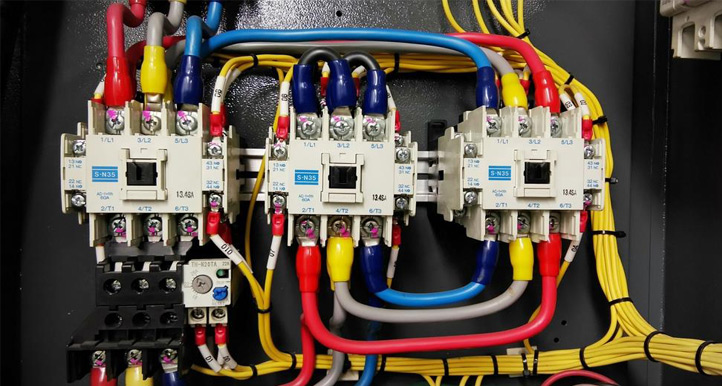Electrical & Lightning System

As a professional contractor who has been responsible for construction of electrical and ELV systems in Vietnam, Laos, Cambodia, Thidaco M&E understands the relationship of the quality of equipment, the performances and the suitable condition of the budget for procurement items in the Mechanical and Electrical (M&E) section of any project.
In the M & E system (Mechanical & Electrical), there are many items that include electrical systems or Electrical and Lightweight ELV (Extra Low Voltage Systems) are two categories. Indispensable in the civil and industrial construction. The power system accounts for about 40-60% of the M & E volume (depending on the project, even up to 70-80%). These systems bring great benefits and conveniences, meeting all requirements for the user and the project owner.
These systems bring great benefits and conveniences, meeting all requirements for the user and the project owner.
Electric power system transmits electricity to households, the electricity consumption. Turns electrical energy into other forms of energy such as heat and power to serve the purpose of the user.
The electrical system consists of the following parts:
1. Electrodynamic system:
The main power supply system for households using electricity such as civil and industrial projects include:
Medium voltage cabinets, medium voltage lines, 22kV / 0.4kV transformers and main switch boards.
Transformer stations, measurement cabinets, electricity meters, medium voltage and low voltage cables.
Submain Power Supply systems supply power for motivation, production, living, and so on. There may be additional Automatic Voltage Regulator (AVR) systems.
Socket outlet system.
2. Generator and Backup Generator System:
Including: Generator, oil tank, oil pump system, oil supply pipe, ATS cabinet, air conditioning cabinet.
UPS aqua backup system for class 1 load carriers such as hospitals, telecommunication centers, parliament houses,…
3. Lighting system:
Domestic lighting, lighting production and business, lighting art, urban decoration, advertising, urban street lighting,…
Emergency Lighting, Exit Lighting & Sign Boards (Emergency Lighting, Sign Boards).
4. Lightning protection system:
Earthing system is a set of objects that can conduct electricity in any shape (metal tube, bar, wire, plate or graphite electrode,…) are arranged in direct contact with grounded and connected together by the metal wire, creating with the ground the electrical connection, there is a definite resistor. The electrical wires used to connect the grounding network to metal structures and electrical equipment that are to be grounded are also part of the grounding system. The grounding system can be divided into many functions such as grounding, lightning protection, earth grounding, protection grounding, etc.
Including: Grounding system, grounding rod, test box, tapered belt, lightning conductor, lightning bolt, lightning collecting needle. The design, material selection, grounding methods should be based on the calculation and specific terrain characteristics.
Lightning conduction system is the place to receive and dissipate electricity caused by direct lightning. Each down wire must be connected to the grounding system and must be well connected to the power supply. A good lightning protection grounding system will withstand lightning strikes, dissipating currents quickly and safely. One of the most important requirements is that the direct lightning protection grounding system must have a grounding resistance value of less than 10 Ohm. Grounding systems for lightning protection should ensure the dissipation of clay, overvoltage and no danger caused by step voltage.
5. Light Notification System:
Including: Controls, lights, lights. Lighting system is not installed compulsory in the high buildings such as buildings, buildings, columns Antena…
6. Solar system:
It can be installed from households to buildings, complexes of buildings or industrial or residential areas. Often installed in the islands, areas far from the center without the national grid.
